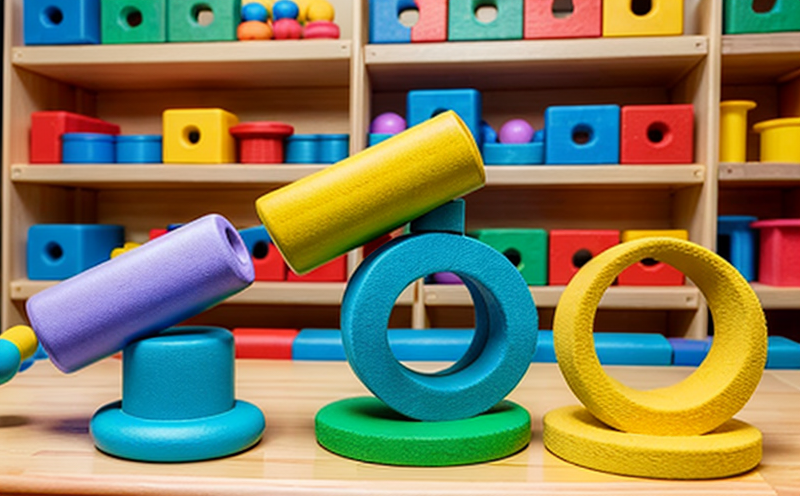Verifying that toys designed for bending or flexing return to their original shape after being manipulated
Verifying Toy Flexibility Ensuring Your Products Meet the Highest Standards
As a manufacturer of toys designed for bending or flexing, you understand the importance of ensuring that your products can withstand various forms of manipulation without compromising their structural integrity. Toys that can bend and flex are a staple in many playrooms around the world, providing endless hours of entertainment and learning opportunities for children. However, their ability to return to their original shape after being manipulated is crucial for safety reasons.
A toy that fails to regain its original shape may pose a choking hazard or cause other injuries to children. Moreover, it can also affect the overall user experience, leading to dissatisfaction and potentially damaging your brand reputation. Thats where Eurolab comes in our laboratory provides a comprehensive testing service specifically designed to verify that toys designed for bending or flexing return to their original shape after being manipulated.
The Importance of Verifying Toy Flexibility
In todays competitive market, ensuring the safety and quality of your products is no longer an option; its a necessity. Here are some compelling reasons why verifying toy flexibility is essential for businesses like yours
Enhanced Safety By testing your toys ability to return to their original shape, you can ensure that they meet or exceed international safety standards.
Increased Customer Satisfaction A toy that consistently meets its intended design specifications will provide a better user experience, leading to increased customer satisfaction and loyalty.
Reduced Liability Verifying toy flexibility helps minimize the risk of product liability claims, protecting your business from potential financial losses.
Benefits of Using Eurolabs Services
Our laboratory provides a range of benefits that can help take your products to the next level. Some of the key advantages include
Accurate Results Our state-of-the-art equipment and experienced technicians ensure accurate results, giving you confidence in the quality of your products.
Compliance with International Standards We follow international standards for toy testing, ensuring that our results are accepted globally.
Flexibility in Testing Methods We offer a range of testing methods to accommodate different types of toys and materials, including plastic, rubber, and foam.
Rapid Turnaround Times Our efficient testing process ensures rapid turnaround times, getting your products back on the market quickly.
QA Section
Here are some frequently asked questions about our laboratory services
What is the purpose of verifying toy flexibility?
Verifying toy flexibility helps ensure that toys designed for bending or flexing can return to their original shape after being manipulated, meeting safety and quality standards.
Why is it essential for businesses like mine to verify toy flexibility?
Its crucial for enhancing safety, increasing customer satisfaction, and reducing liability. By verifying toy flexibility, you can minimize the risk of product liability claims and protect your business from potential financial losses.
What types of toys can be tested using Eurolabs services?
Our laboratory provides testing services for various types of toys made from different materials, including plastic, rubber, and foam.
Conclusion
In todays fast-paced market, ensuring the quality and safety of your products is no longer an option; its a necessity. By partnering with Eurolab, you can rest assured that your toys meet or exceed international standards for toy testing. Our comprehensive laboratory services provide accurate results, compliance with international standards, flexibility in testing methods, and rapid turnaround times.
Dont risk compromising the safety and quality of your products. Contact us today to learn more about our Verifying Toy Flexibility services and take the first step towards ensuring a safer and more satisfying user experience for children around the world.
-
Testing the ability of materials in toys to withstand bending without breaking or cracking
-
Evaluating the structural integrity of toys under bending stress, ensuring that they do not deform easily
-
Simulating real-world play to assess whether toys with flexible parts maintain their shape after bending
-
Ensuring that toys with bendable features, such as soft plastic or rubber parts, resist permanent deformation
-
Verifying the strength of toy components, such as limbs, joints, or handles, against excessive bending forces
-
Testing materials used in toys to ensure they have adequate flexibility while maintaining durability
-
Ensuring that toys with elastic or flexible components do not break when bent or twisted during play
-
Testing whether toys retain their functionality after being bent or deformed during typical usage
-
Ensuring that toys with materials such as foam, plastic, or rubber remain intact when subjected to bending forces
-
Simulating the repeated bending or flexing of toys to test long-term durability and resistance to wear
-
Testing the bending strength of toys designed for older children to ensure they can handle more intense play
-
Verifying that toys with multiple bendable parts do not weaken or break under repeated play
-
Testing toys with adjustable parts to ensure their bending points remain functional over time
-
Ensuring that the toy’s design maintains strength in areas likely to experience bending forces, like handles or limbs
-
Verifying that bending does not affect the safety or usability of toys, particularly those with sharp or moving parts
-
Testing for durability in toys that require bending or compression as part of their interactive features
-
Assessing toys for any potential risk of injury from sharp bends that could create hazardous edges
-
Ensuring that the materials used in toys can handle sudden or extreme bending without failure
-
Verifying that toys with soft materials or stuffing do not lose their shape after bending or pressing
-
Testing toys with reinforced parts to ensure they do not break under bending or twisting pressure
-
Ensuring that toys with moveable or flexible features provide enough resistance to bending without loss of form




